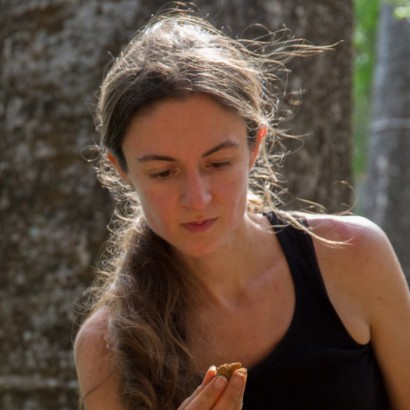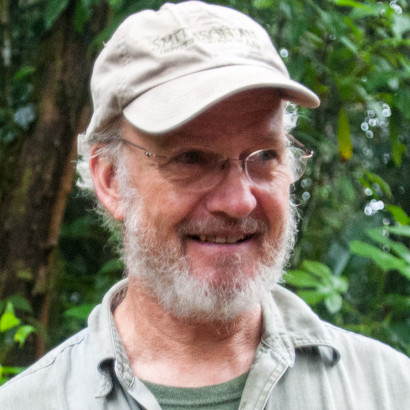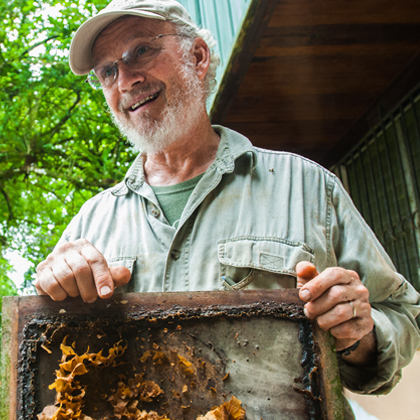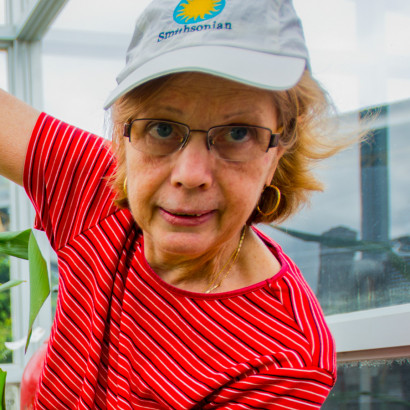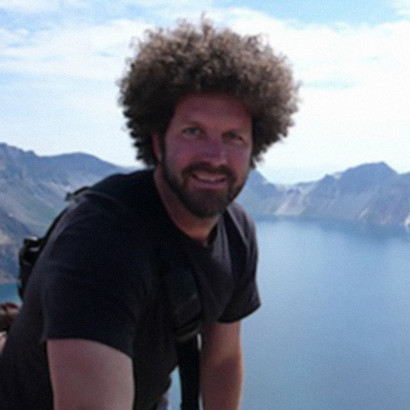Chang-Yang, Chia-Hao, Needham, Jessica, Lu, Chia-Ling, Hsieh, Chang-Fu, Sun, I-Fang and McMahon, Sean M. (2021). Closing the life cycle of forest trees: The difficult dynamics of seedling-to-sapling transitions in a subtropical rainforest. Journal of Ecology, https://doi.org/10.1111/1365-2745.13677
Chitra-Tarak, Rutuja, Xu, Chonggang, Aguilar, Salomon, Anderson-Teixeira, Kristina J., Chambers, Jeff, Detto, Matteo, Faybishenko, Boris, Fisher, Rosie A., Knox, Ryan G., Koven, Charles D., Kueppers, Lara M., Kunert, Nobert, Kupers, Stefan J., McDowell, Nate G., Newman, Brent D., Paton, Steven R., Perez, Rolando, Ruiz, Laurent, Sack, Lawren, Warren, Jeffrey M., Wolfe, Brett T., Wright, Cynthia, Wright, S. Joseph, Zailaa, Joseph and McMahon, Sean M. (2021). Hydraulically-vulnerable trees survive on deep-water access during droughts in a tropical forest. New Phytologist, https://doi.org/10.1111/nph.17464
Davies, Stuart J., Abiem, Iveren, Abu Salim, Kamariah, Aguilar, Salomon, Allen, David, Alonso, Alfonso, Anderson-Teixeira, Kristina J., Andrade, Ana, Arellano, Gabriel, Ashton, Peter S., Baker, Patrick J., Baker, Matthew E., Baltzer, Jennifer L., Basset, Yves, Bissiengou, Pulcherie, Bohlman, Stephanie, Bourg, Norman A., Brockelman, Warren Y., Bunyavejchewin, Sarayudh, Burslem, David F. R. P., Cao, Min, Cardenas, Dairon, Chang, Li-Wan, Chang-Yang, Chia-Hao, Chao, Kuo-Jung, et al. (2021). ForestGEO: Understanding forest diversity and dynamics through a global observatory network. Biological Conservation, 253 , 108907-108907. https://doi.org/10.1016/j.biocon.2020.108907
Poyatos, Rafael, Granda, Victor, Flo, Victor, Adams, Mark A., Adorjan, Balazs, Aguade, David, Aidar, Marcos P. M., Allen, Scott, Susana Alvarado-Barrientos, M., Anderson-Teixeira, Kristina J., Aparecido, Luiza Maria, Arain, M. Altaf, Aranda, Ismael, Asbjornsen, Heidi, Baxter, Robert, Beamesderfer, Eric, Berry, Z. Carter, Berveiller, Daniel, Blakely, Bethany, Boggs, Johnny, Bohrer, Gil, Bolstad, Paul, V., Bonal, Damien, Bracho, Rosvel, Brito, Patricia, et al. (2021). Global transpiration data from sap flow measurements: the SAPFLUXNET database. Earth System Science Data, 13 (6) , 2607-2649. https://doi.org/10.5194/essd-13-2607-2021
Sedio, Brian E., Spasojevic, Marko J., Myers, Jonathan A., Wright, S. Joseph, Person, Maria D., Chandrasekaran, Hamssika, Dwenger, Jack H., Prechi, Maria Laura, Lopez, Christian A., Allen, David N., Anderson-Teixeira, Kristina J., Baltzer, Jennifer L., Bourg, Norman A., Castillo, Buck T., Day, Nicola J., Dewald-Wang, Emily, Dick, Christopher W., James, Timothy Y., Kueneman, Jordan G., LaManna, Joseph, Lutz, James A., McGregor, Ian R., McMahon, Sean M., Parker, Geoffrey G., Parker, John D., et al. (2021). Chemical Similarity of Co-occurring Trees Decreases With Precipitation and Temperature in North American Forests. Frontiers in Ecology and Evolution, 9 https://doi.org/10.3389/fevo.2021.679638
Fung, Tak, Chisholm, Ryan A., Anderson-Teixeira, Kristina J., Bourg, Norm, Brockelman, Warren Y., Bunyavejchewin, Sarayudh, Chang‐Yang, Chia-Hao, Chitra‐Tarak, Rutuja, Chuyong, George, Condit, Richard, Dattaraja, Handanakere S., Davies, Stuart J., Ewango, Corneille E. N., Fewless, Gary, Fletcher, Christine, Gunatilleke, C. V. S., Gunatilleke, I. A. U. N., Hao, Zhanqing, Hogan, J. A., Howe, Robert, Hsieh, Chang-Fu, Kenfack, David, Lin, YiChing, Ma, Keping, Makana, Jean-Remy, et al. (2020). Temporal population variability in local forest communities has mixed effects on tree species richness across a latitudinal gradient . Ecology Letters, 23 (1) , 160-171. https://doi.org/10.1111/ele.13412
Russo, Sabrina E., McMahon, Sean M., Detto, Matteo, Ledder, Glenn, Wright, S. Joseph, Condit, Richard S., Davies, Stuart J., Ashton, Peter S., Bunyavejchewin, Sarayudh, Chang-Yang, Chia-Hao, Ediriweera, Sisira, Ewango, Corneille E. N., Fletcher, Christine, Foster, Robin B., Gunatilleke, C. V. Savi, Gunatilleke, I. A. U. Nimal, Hart, Terese, Hsieh, Chang-Fu, Hubbell, Stephen P., Itoh, Akira, Kassim, Abdul Rahman, Leong, Yao Tze, Lin, Yi Ching, Makana, Jean-Remy, Mohamad, Mohizah Bt, et al. (2020). The interspecific growth-mortality trade-off is not a general framework for tropical forest community structure. Nature Ecology & Evolution, https://doi.org/10.1038/s41559-020-01340-9
Walker, Anthony P., De Kauwe, Martin G., Bastos, Ana, Belmecheri, Soumaya, Georgiou, Katerina, Keeling, Ralph, McMahon, Sean M., Medlyn, Belinda E., Moore, David J. P., Norby, Richard J., Zaehle, Sönke, Anderson-Teixeira, Kristina J., Battipaglia, Giovanna, Brienen, Roel J. W., Cabugao, Kristine G., Cailleret, Maxime, Campbell, Elliott, Canadell, Josep, Ciais, Philippe, Craig, Matthew E., Ellsworth, David, Farquhar, Graham, Fatichi, Simone, Fisher, Joshua B., Frank, David, et al. (2020). Integrating the evidence for a terrestrial carbon sink caused by increasing atmospheric CO2 . The New Phytologist, https://doi.org/10.1111/nph.16866
Walker, Anthony P., De Kauwe, Martin G., Bastos, Ana, Belmecheri, Soumaya, Georgiou, Katerina, Keeling, Ralph, McMahon, Sean M., Medlyn, Belinda E., Moore, David J. P., Norby, Richard J., Zaehle, Sönke, Anderson‐Teixeira, Kristina J., Battipaglia, Giovanna, Brienen, Roel J. W., Cabugao, Kristine G., Cailleret, Maxime, Campbell, Elliott, Canadell, Josep, Ciais, Philippe, Craig, Matthew E., Ellsworth, David, Farquhar, Graham, Fatichi, Simone, Fisher, Joshua B., Frank, David, et al. (2020). Integrating the evidence for a terrestrial carbon sink caused by increasing atmospheric CO 2 . New Phytologist, https://doi.org/10.1111/nph.16866
Albert, Loren P., Restrepo-Coupe, Natalia, Smith, Marielle N., Wu, Jin, Chavana-Bryant, Cecilia, Prohaska, Neill, Taylor, Tyeen C., Martins, Giordane A., Ciais, Philippe, Mao, Jiafu, Arain, M. A., Li, Wei, Shi, Xiaoying, Ricciuto, Daniel M., Huxman, Travis E., McMahon, Sean M. and Saleska, Scott R. (2019). Cryptic phenology in plants: case studies, implications and recommendations . Global Change Biology, 25 (11) , 3591-3608. https://doi.org/10.1111/gcb.14759
Briscoe, Natalie J., Elith, Jane, Salguero-Gómez, Roberto, Lahoz-Monfort, Jos, Camac, James S., Giljohann, Katherine M., Holden, Matthew H., Hradsky, Bronwyn A., Kearney, Michael R., McMahon, Sean M., Phillips, Ben L., Regan, Tracey J., Rhodes, Jonathan R., Vesk, Peter A., Wintle, Brendan A., Yen, Jian D. L. and Guillera-Arroita, Gurutzeta. (2019). Forecasting species range dynamics with process-explicit models: matching methods to applications . Ecology Letters, 22 (11) , 1940-1956. https://doi.org/10.1111/ele.13348
Fung, Tak, Chisholm, Ryan A., Anderson-Teixeira, Kristina, Bourg, Norm, Brockelman, Warren Y., Bunyavejchewin, Sarayudh, Chang-Yang, Chia-Hao, Chitra-Tarak, Rutuja, Chuyong, George, Condit, Richard, Dattaraja, Handanakere S., Davies, Stuart J., Ewango, Corneille E. N., Fewless, Gary, Fletcher, Christine, Gunatilleke, C. V. Savitri, Gunatilleke, I. A. U. Nimal, Hao, Zhanqing, Hogan, J. Aaron, Howe, Robert, Hsieh, Chang-Fu, Kenfack, David, Lin, YiChing, Ma, Keping, Makana, Jean-Remy, et al. (2019). Temporal population variability in local forest communities has mixed effects on tree species richness across a latitudinal gradient . Ecology Letters, https://doi.org/10.1111/ele.13412
Hogan, J. Aaron, McMahon, Sean M., Buzzard, Vanessa, Michaletz, Sean T., Enquist, Brian J., Thompson, Jill, Swenson, Nathan G. and Zimmerman, Jess K. (2019). Drought and the interannual variability of stem growth in an aseasonal, everwet forest. Biotropica, 51 (2) , 139-154. https://doi.org/10.1111/btp.12624
McMahon, Sean M., Arellano, Gabriel and Davies, Stuart J. (2019). The importance and challenges of detecting changes in forest mortality rates . Ecosphere, 10 (2) , 1-10. https://doi.org/10.1002/ecs2.2615
Smith, Marielle N., Stark, Scott C., Taylor, Tyeen C., Ferreira, Mauricio L., Oliveira, Eronaldo de, Restrepo‐Coupe, Natalia, Chen, Shuli, Woodcock, Tara, dos Santos, Darlisson Bentes, Alves, Luciana F., Figueira, Michela, de Camargo, Plinio B., de Oliveira, Raimundo C., Aragão, Luiz E. O. C., Falk, Donald A., McMahon, Sean M., Huxman, Travis E. and Saleska, Scott R. (2019). Seasonal and drought related changes in leaf area profiles depend on height and light environment in an Amazon forest . New Phytologist, 222 (3) , 1284-1297. https://doi.org/10.1111/nph.15726
Needham, Jessica, Merow, Cory, Chang-Yang, Chia, Caswell, Hal and McMahon, Sean M. (2018). Inferring forest fate from demographic data: from vital rates to population dynamic models. Proceedings of the Royal Society B: Biological Sciences, 285 (1874) https://doi.org/10.1098/rspb.2017.2050
Sedio, Brian E., Parker, John D., McMahon, Sean M. and Wright, S. Joseph. (2018). Comparative foliar metabolomics of a tropical and a temperate forest community . Ecology, 99 (12) , 2647-2653. https://doi.org/10.1002/ecy.2533
Taylor, Tyeen C., McMahon, Sean M., Smith, Marielle N., Boyle, Brad, Violle, Cyrille, van Haren, Joost, Simova, Irena, Meir, Patrick, Ferreira, Leandro V., de Camargo, Plinio B., da Costa, Antonio C. L., Enquist, Brian J. and Saleska, Scott R. (2018). Isoprene emission structures tropical tree biogeography and community assembly responses to climate. New Phytologist, 220 (2) , 435-446. https://doi.org/10.1111/nph.15304
LaManna, Joseph A., Mangan, Scott A., Alonso, Alfonso, Bourg, Norman A., Brockelman, Warren Y., Bunyavejchewin, Sarayudh, Chang, Li-Wan, Chiang, Jyh-Min, Chuyong, George B., Clay, Keith, Condit, Richard S., Cordell, Susan, Davies, Stuart J., Furniss, Tucker J., Giardina, Christian P., Gunatilleke, I. A. U. Nimal, Gunatilleke, C. V. Savitri, He, Fangliang, Howe, Robert W., Hubbell, Stephen P., Hsieh, Chang-Fu, Inman-Narahari, Faith M., Janik, David, Johnson, Daniel J., Kenfack, David, et al. (2017). Plant diversity increases with the strength of negative density dependence at the global scale . Science, 356 (6345) , 1389-1392. https://doi.org/10.1126/science.aam5678
Evans, Margaret, Merow, Cory, Record, Sydne, McMahon, Sean M. and Enquist, Brian J. (2016). Towards Process-based Range Modeling of Many Species. Trends in Ecology & Evolution, 31 (11) , 860-871. https://doi.org/10.1016/j.tree.2016.08.005
Griffith, Alden B., Salguero-Gómez, Roberto, Merow, Cory and McMahon, Sean. (2016). Demography beyond the population. Journal of Ecology, 104 (2) , 271-280. https://doi.org/10.1111/1365-2745.12547
Herrmann, Valentine, McMahon, Sean M., Detto, Matteo, Lutz, James A., Davies, Stuart James, Chang-Yang, Chia and Anderson-Teixeira, Kristina J. (2016). Tree Circumference Dynamics in Four Forests Characterized Using Automated Dendrometer Bands . Plos One, 11 (12) , 1-20. https://doi.org/10.1371/journal.pone.0169020
Janík, David, Král, Kamil, Adam, Dusan, Hort, Libor, Samonil, Pavel, Unar, Pavel, Vrska, Tomás and McMahon, Sean. (2016). Tree spatial patterns of Fagus sylvatica expansion over 37 years. Forest Ecology and Management, 375 , 134-145. https://doi.org/10.1016/j.foreco.2016.05.017
Král, Kamil, Shue, Jessica, Vrška, Tomáš, Gonzalez-Akre, Erika, Parker, Geoffrey G., McShea, William J. and McMahon, Sean M. (2016). Fine-scale patch mosaic of developmental stages in Northeast American secondary temperate forests: the European perspective . European Journal of Forest Research, 135 (5) , 981-996. https://doi.org/10.1007/s10342-016-0988-1
Needham, Jessica, Merow, Cory, Butt, Nathalie, Malhi, Yadvinder, Marthews, Toby R., Morecroft, Michael and McMahon, Sean M. (2016). Forest community response to invasive pathogens: the case of ash dieback in a British woodland. Journal of Ecology, 104 (2) , 315-330. https://doi.org/10.1111/1365-2745.12545
Anderson-Teixeira, Kristina J., Davies, Stuart James, Bennett, Amy C., Gonzalez-Akre, Erika, Muller-Landau, Helene C., Wright, S. Joseph, Abu Salim, Kamariah, Almeyda Zambrano, Angélica M., Alonso, Alfonso, Baltzer, Jennifer L., Basset, Yves, Bourg, Norman A., Broadbent, Eben N., Brockelman, Warren Y., Bunyavejchewin, Sarayudh, Burslem, David F. R. P., Butt, Nathalie, Cao, Min, Cardenas, Dairon, Chuyong, George B., Clay, Keith, Cordell, Susan, Dattaraja, Handanakere S., Deng, Xiaobao, Detto, Matteo, et al. (2015). CTFS-ForestGEO: a worldwide network monitoring forests in an era of global change . Global Change Biology, 21 (2) , 528-549. https://doi.org/10.1111/gcb.12712

